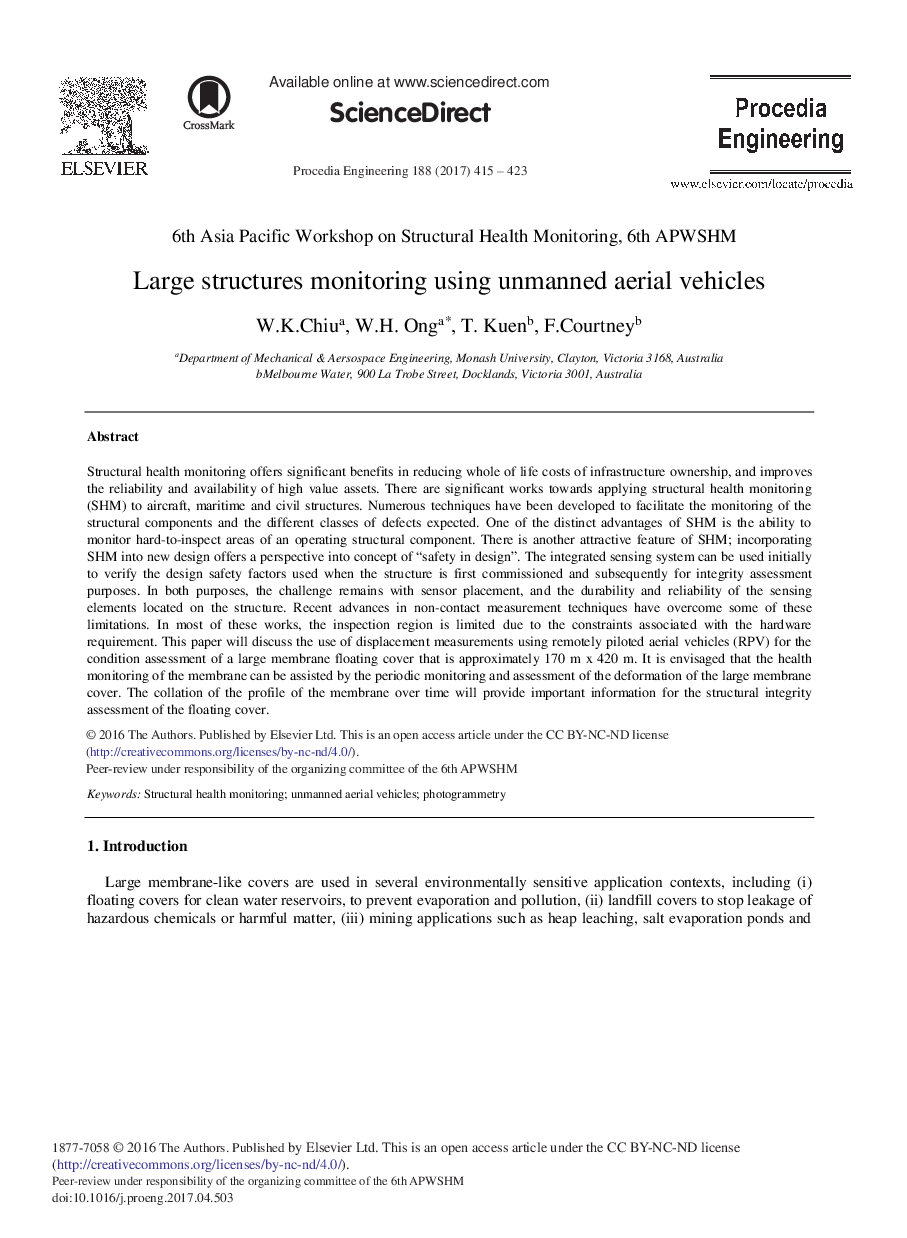| کد مقاله | کد نشریه | سال انتشار | مقاله انگلیسی | نسخه تمام متن |
|---|---|---|---|---|
| 5027832 | 1470638 | 2017 | 9 صفحه PDF | دانلود رایگان |
Structural health monitoring offers significant benefits in reducing whole of life costs of infrastructure ownership, and improves the reliability and availability of high value assets. There are significant works towards applying structural health monitoring (SHM) to aircraft, maritime and civil structures. Numerous techniques have been developed to facilitate the monitoring of the structural components and the different classes of defects expected. One of the distinct advantages of SHM is the ability to monitor hard-to-inspect areas of an operating structural component. There is another attractive feature of SHM; incorporating SHM into new design offers a perspective into concept of “safety in design”. The integrated sensing system can be used initially to verify the design safety factors used when the structure is first commissioned and subsequently for integrity assessment purposes. In both purposes, the challenge remains with sensor placement, and the durability and reliability of the sensing elements located on the structure. Recent advances in non-contact measurement techniques have overcome some of these limitations. In most of these works, the inspection region is limited due to the constraints associated with the hardware requirement. This paper will discuss the use of displacement measurements using remotely piloted aerial vehicles (RPV) for the condition assessment of a large membrane floating cover that is approximately 170 m x 420 m. It is envisaged that the health monitoring of the membrane can be assisted by the periodic monitoring and assessment of the deformation of the large membrane cover. The collation of the profile of the membrane over time will provide important information for the structural integrity assessment of the floating cover.
Journal: Procedia Engineering - Volume 188, 2017, Pages 415-423
